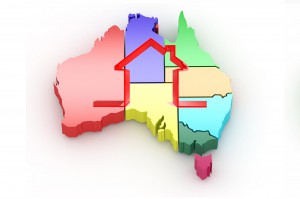In his column for Switzer, John McGrath analyses the latest Pain & Gain report form CorleLogic.
Here’s what he had to say:
CoreLogic’s latest Pain and Gain Report shows nine out of 10 homes re-sold during the September 2016 quarter were sold at a higher price than their original purchase price, with an average gross capital gain of $262,672.
The report makes it very clear that the longer you hold a property, the more likely you are to sell for a decent capital gain.
Across Australia, homes that re-sold at a loss had an average hold period of 6.1 years for houses and 6.5 years for apartments.
Conversely, homes that re-sold for a profit were held for an average of 9.1 years for houses and 7.6 years for apartments.
Buying and holding is the key to wealth creation in real estate, no matter what type of property you own.
Historically, houses have typically done better than apartments in terms of average capital gains but it’s interesting to note that in Sydney, a change to this long term trend is afoot.
The CoreLogic report notes that over the past two years, there has actually been more re-sales at a loss among houses than apartments (although the proportion of homes selling at a loss is extremely low in both the houses and apartments categories).
For example, in the September quarter, the proportion of Sydney houses re-selling at a loss was 2.5% and the proportion of apartments was 1.9%.
This reflects rising demand for apartments in Australia’s most expensive city.
This trend will continue as Sydney property gets more expensive and affordability constraints restrict more people to apartments.
But given apartments are less expensive, they have more room for capital growth, too.
Either way, the main point is you should do well with any type of property if you buy in a good location and hold for the long term.
Among those homeowners who sold at a loss, the average loss was $71,529.
The end of the mining boom is making a significant contribution here, with the highest proportion of loss-making sales across our capital cities recorded in Darwin and Perth.
This is an important lesson, particularly for investors, that it’s never a good idea to buy in a town solely or largely dependent on one industry.
Across the capital cities, the proportion of loss-making re-sales are as follows:
- Sydney: 2.3%
- Melbourne: 4.9%
- Adelaide: 7.2%
- Hobart: 8.4%
- Brisbane: 8.5%
- Canberra: 12.2%
- Perth: 19.6%
- Darwin: 30.7%
So, why would people sell at a loss?
There are many typical scenarios with loss-making re-sales, including:
- Selling too soon after purchase for personal reasons, such as a work transfer or expanding your family and needing more space
- Selling at the wrong time in the market cycle, for example buying at the height of a boom and selling too soon when the market is softening (again, this usually happens when the re-sale is prompted by personal reasons)
- Investors who enter the market in good times (i.e. during a boom and/or when interest rates are low) who then sell too soon because they have not sufficiently prepared themselves for rising mortgage rates or ongoing hold costs over the long term
Holding for the long term will definitely determine whether you sell for a loss or gain.
The level of loss or gain usually comes down to time in the market and the location of your property.
Here are the Top 5 council districts in the major East Coast capitals where properties recorded the highest re-sale gains.
I’ve included the average hold periods so you can see how much time these sellers needed to hold their properties in these locations to achieve such impressive capital gains.
Sydney
- Hunters Hill – Median profit $785,000 (median hold period 8.9 years)
- Ku-ring-gai – $733,500 (6.3 years)
- Woollahra – $670,000 (6.6 years)
- Manly – $636,500 (7.4 years)
- Willoughby – $625,000 (8.3 years)
Melbourne
- Boroondara – Median profit $574,750 (median hold period 10.8 years)
- Bayside – $555,750 (9.4 years)
- Manningham – $524,000 (9.6 years)
- Whitehorse – $480,000 (11.3 years)
- Monash – $415,500 (9.5 years)
Brisbane/Gold Coast
- Brisbane – Median profit $173,250 (median hold period 9.3 years)
- Gold Coast – $110,000 (8.6 years)
- Redland – $110,000 (9.2 years)
- Sunshine Coast – $98,000 (8.9 years)
- Logan – $94,500 (9.2 years)




No comments:
Post a Comment